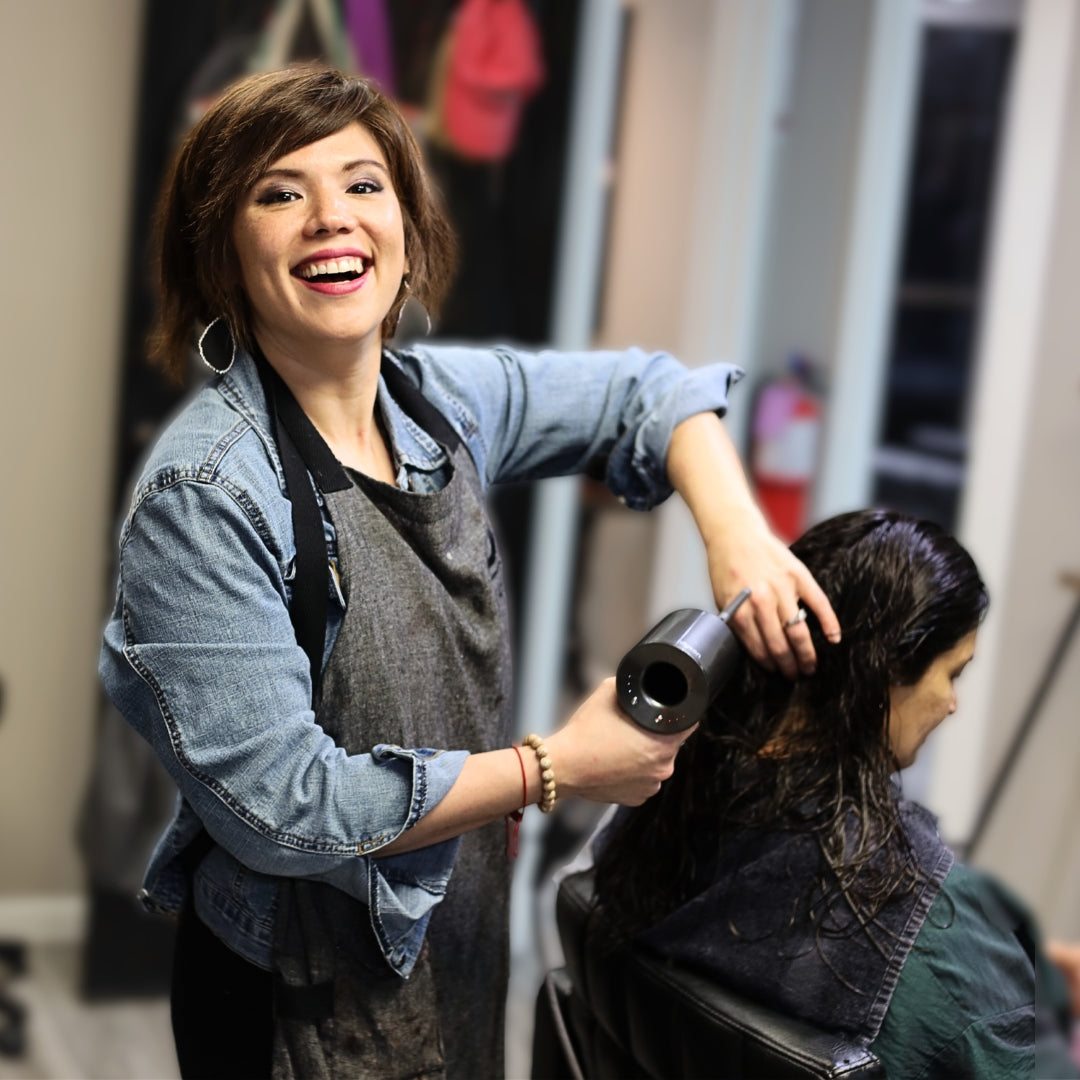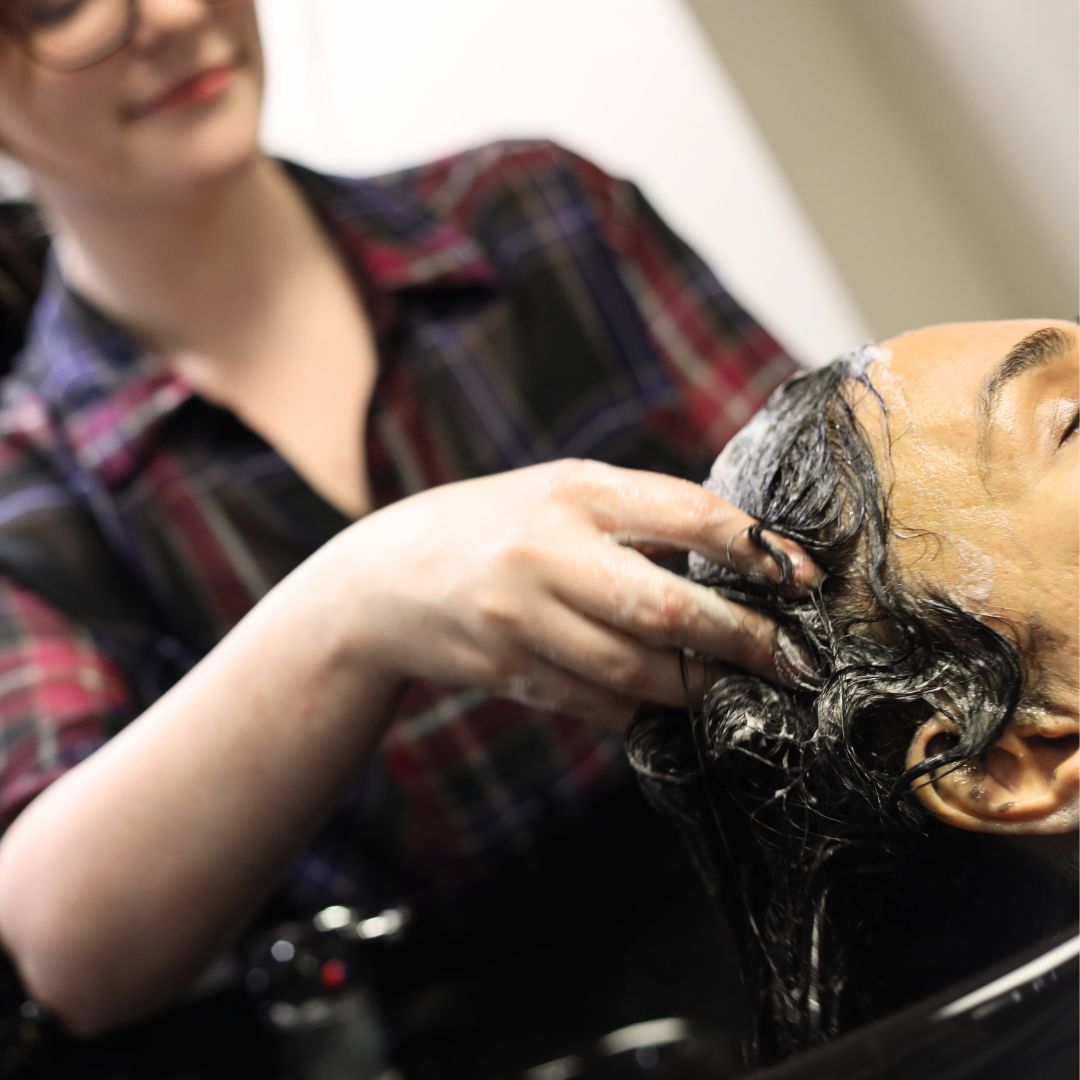Why Hair Color Can Increase Your Risk of Cancer
 Are you someone who loves to experiment with your hair color? Perhaps you enjoy trying different shades and styles to express your unique personality. While changing your hair color can be a fun and creative way to enhance your appearance, it's important to be aware of the potential risks involved. Recent studies have suggested a possible link between hair dye and an increased risk of cancer. In this article, we will delve into the research and explore why hair color may have a detrimental impact on your health.
Are you someone who loves to experiment with your hair color? Perhaps you enjoy trying different shades and styles to express your unique personality. While changing your hair color can be a fun and creative way to enhance your appearance, it's important to be aware of the potential risks involved. Recent studies have suggested a possible link between hair dye and an increased risk of cancer. In this article, we will delve into the research and explore why hair color may have a detrimental impact on your health.After Terri (our owner/founder) graduated from cosmetology school, she continued her education traveling to London, New York, and Dallas. During this time she noticed something truly alarming — many of the seasoned hair stylists were teaching and no longer working as a stylist due to the impact that their career had on their health. After years of exposure to the chemicals found in hair dyes and relaxers, many of these stylists-turned-teachers had cancer and various types of autoimune diseases. This is one of the big reasons Terri opened Ippodaro Natural Salon and offers various natural, organic, and/or holistic alternatives to hair services.
Understanding Hair Dyes and Hair Relaxers
Before we dive into the potential risks, let's first understand what hair dyes and hair relaxers are. Hair dyes are products that permanently change the color of your hair by stripping away its natural color and replacing it with artificial pigments. On the other hand, hair relaxers are chemical products that alter the structure of curly hair, making it straight. Hair relaxers can last for several months and even remain effective even when the hair gets wet. Both hair dyes and hair relaxers contain various chemicals that undergo chemical reactions to achieve the desired results.
The Conflicting Findings in Research
Over the years, numerous studies have been conducted to explore the relationship between hair dyes, hair relaxers, and cancer risk. However, the results have often been inconsistent and contradictory. Some studies have suggested a possible link between frequent use of hair relaxers and an increased risk of breast, ovarian, and uterine cancers, while others have not found a definitive connection. The same is true for hair dyes, where certain studies have indicated a higher risk of breast cancer, particularly among Black women, while other studies have not found a significant association.
That said, we have a few questions for you consider:
- Why risk it?
- What companies are funding these studies…?
Chemicals in Hair Products and Their Potential Impact

So, what exactly are the chemicals in hair dyes and hair relaxers that may contribute to an increased cancer risk? Several chemicals commonly found in these products have raised concerns. These include formaldehyde, formaldehyde-releasing chemicals, oxidized para-phenylenediamine, and 4-aminobiphenyl. These chemicals have been classified as potential carcinogens or endocrine disruptors, which means they can interfere with the hormonal balance in the body and potentially lead to the development of cancer cells. Additionally, hair relaxers have been found to contain phthalates, parabens, cyclosiloxanes, and metals, which may further contribute to the risk of cancer.
Please Note: not all parabens are bad. We will dive into that soon!
The Impact on Different Groups
It's important to note that certain groups of people may be at a higher risk when it comes to the potential dangers of hair dyes and hair relaxers. For example, Black individuals tend to use hair relaxers more frequently than other racial and ethnic groups. This higher usage may put them at a greater risk for cancer. Additionally, hairdressers who work with these products on a daily basis may also face an increased risk of cancer due to occupational exposure. It's crucial for these groups to be aware of the potential dangers and take necessary precautions.
Recommendations for Safer Hair Coloring and Treatments
While the research on the connection between hair color and cancer risk is still ongoing, there are steps you can take to minimize potential harm:
Choose Natural Alternatives:
Consider using natural hair dyes that are free from harmful chemicals. These products are becoming more widely available and offer a safer alternative to traditional hair dyes.
Here at Ippodaro Natural Salon we have a few options for hair color:

Oway — Oway is one of our go-to hair colors and some of our most popular products. The reason Oway’s color is a good option for individuals going through cancer treatment or those in remission is that it has a low concentration of PPD and other preserving ingredients. Additionally, when making the formulations, Oway picks and distills pure organic extracts, essential oils, and hydrolates with zero chemicals (in accordance with biodynamic farming standards).
A few bonuses to Oway’s hair color include: it smells amazing, and the hair goes back to its natural softness (especially when used overtime), it is great at combatting grays, and the color itself lasts longer than other conventional hair dyes.
Hairprint — For those looking for a pure color while avoiding any harmful chemicals, Hairprint is the color for you! Based on the principles of nature, Hairprint uses only eight food-grade ingredients all of which you can pronounce!
Hairprint is non-toxic and uses patented technology created by Dr. John Warner, the founding father of green chemistry. Hairprint is so special because of the way it colors your hair. Your natural hair color comes from melanin and Hairprint actually creates melanin and when applied, adds it back into your hair.
Due to the fact that Hairprint is so clean, it is great for those in remission, anyone with an autoimmune disease, individuals who practice a more holist lifestyle, and/or those with sensitive scalps (especially after using a conventional hair dye).
Pro Tip: If you ever have a skin reaction after dying your hair, it’s time to stop using traditional dyes.
Note that transitioning to using Hairprint is a process, and will often require a few applications (especially at first). But patience is a virtue when it comes to hair health! If you come to Ippodaro for Hairprint, we definitely make the process enjoyable with healthy snacks, organic tea, a space to relax in silense, and we even offer holistic facials!
Other Options — In addition to Oway and Hairprint, we offer other options based on specific sensitivities. Book a consultation with our hair healers and we can help navigate the right direction for you! It’s important to note that even organic lines can cause reactions, therefore, it’s beneficial to identify the best treatments for you!
Read Labels:
Pay close attention to the ingredients listed on hair dye and hair relaxer products. Avoid those that contain formaldehyde or its derivatives, as these chemicals have been linked to cancer.
Limit Frequency:
If you choose to use hair relaxers or hair dyes, try to limit the frequency of use. Infrequent or occasional use may pose a lower risk compared to regular and prolonged exposure.
Additionally, if you are having scalp sensitivity or some kind of reaction to hair dyes or relaxers 2-3 days after the treatment (especially if you are experiencing flaking), this is a tell-tale sign that these processes are affecting your hair, scalp, and potentially your overall health. If that is happening, it’s definitely time to opt for different alternatives to traditional hair color and/or relaxers.
Alternative Option for Hair Relaxers:
The Oway Hstraighten Treatment— an emulsion with a smoothing and taming action on the capillary fibre. It’s important to note that it is not exactly the same as a traditional relaxer. That said, Hstraighten is a significantly cleaner option for hair as it does not contain formaldehyde, is composed of 87.17% natural derived ingredients, and is both dermattologically and nickel tested.
Hstraighten offers many benefits such as sublime smoothness that lasts from 3-5 months (depending on hair-type) and making it significantly easier to work with and style. Additionally, Hstraighten will do the following.
- Eliminate the frizzy effect
- Restore hydration and softness to the hair fibre
- Reduce excessive unwanted volume
- Perfectly closes the cuticles, bringing more brightness
- Provide a filming effect on the surface of the hair
- Perfectly tame hair without electrostatic effects
- Restore the well-being of the hair, protecting it from adverse external agents
If you're unsure about the safety of a certain hair product, consult with a professional hairstylist or a dermatologist. They can provide guidance and recommend safer alternatives.
If you’re unsure about the ingredients in your go-to hair products, bring them into the salon during your next appointment and we can take a look at the ingredients! If needed, you can always give us a call!
Conclusion
While hair coloring can be a fun way to express yourself, it's essential to be aware of the potential risks involved, particularly in relation to cancer. The chemicals present in hair dyes and hair relaxers have raised concerns and have been associated with an increased risk of certain cancers. By choosing natural alternatives, reading labels, and limiting the frequency of use, you can make safer choices when it comes to coloring your hair. Remember, your health should always be a priority, even when it comes to beauty and self-expression.
Additional Information: It is worth noting that more research is needed to fully understand the potential risks associated with hair dyes and hair relaxers. The studies conducted so far have provided valuable insights, but more comprehensive and diverse research is necessary to draw definitive conclusions. It is always recommended to consult with healthcare professionals for personalized advice based on individual health factors and concerns.
Please reach out to us if you have any questions by calling us at (210) 524-9744, texting us at (210) 864-1034, or email us at info@ippodarosalon.com.
Disclaimer: The information provided in this article is for informational purposes only and should not be considered as medical advice. Always consult with a healthcare professional before making any decisions regarding your health.



